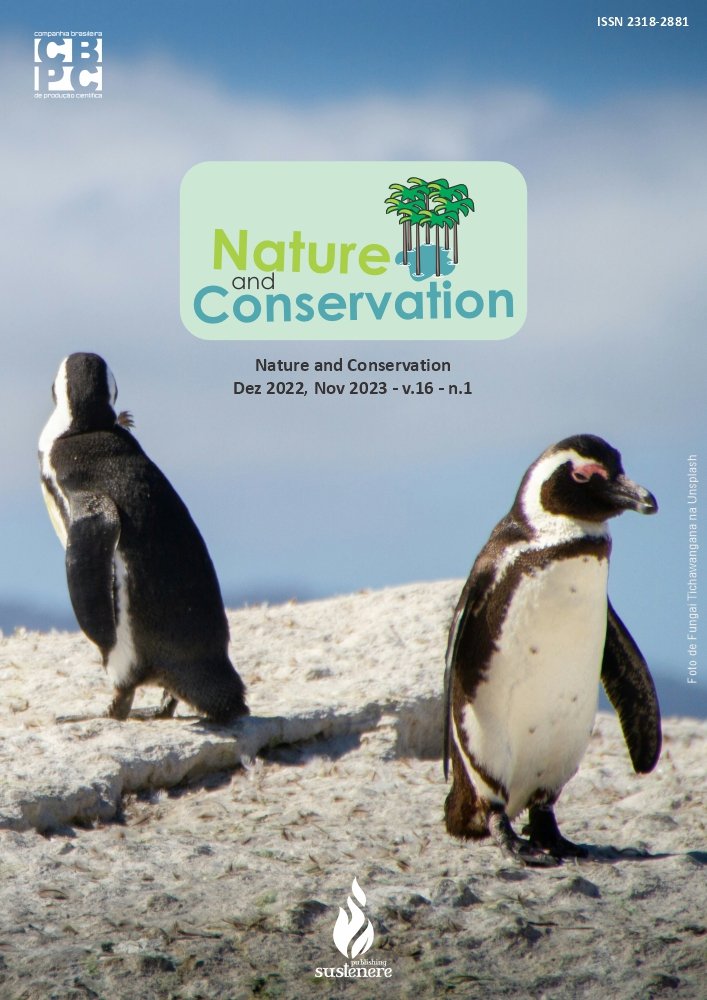Phytosociological evaluation of the woody vegetation of two restingas, North coast of Bahia State, Brazil
DOI:
https://doi.org/10.6008/CBPC2179-6858.2021.008.0014Keywords:
Woody Stratum, Vegetation Structure, Pioneer Plants, Conservation, Northeast RegionAbstract
The present study aimed to analyze the phytosociology and the successional level of the woody stratum in two restinga areas. The phytosociological survey was carried out in the restinga of Massarandupió and Diogo, north coast of Bahia state, in the period from 2010 to 2012, through the quadrant method. Five parallel transects 10 m apart were used, and ten points were allocated in each transect; totaling 50 points in each area. In the two restingas, 58 species, 42 genera and 27 families were identified. The most representative families were Myrtaceae (13 species), Sapotaceae (five species), Dilleniaceae and Fabaceae (four species, each). The most dominant species were classified as pioneers. In the restinga of Diogo 32 species and 19 families were found; in Massarandupió 32 species and 18 families were recorded. The flora similarity value was 18.75%, demonstrating low similarity between the areas. The Brazilian coast is composed of very heterogeneous flora, in species composition and structure, with different formations, although spatially close. Soil salinity and nutrient disposition are factors that contribute to the difference in species distribution. Understanding the natural regeneration process of vegetation, through ecological succession, is important to assist in future recovery strategies for coastal environments.
Downloads
Downloads
Published
Issue
Section
License
Copyright (c) 2021 Ibero-American Journal of Environmental Sciences

This work is licensed under a Creative Commons Attribution-NonCommercial-NoDerivatives 4.0 International License.
The CBPC - Companhia Brasileira de Produção Científica (Brazil CNPJ: 11.221.422/0001-03) the material rights of the published works. The rights relate to the publication of the work anywhere in the world, including rights to renewals, expansions and dissemination of the contribution, as well as other subsidiary rights. All electronically published works may subsequently be published in printed collections under the coordination of this company and / or its partners. The authors preserve the copyright, but are not allowed to publish the contribution in another medium, printed or digital, in Portuguese or in translation.









